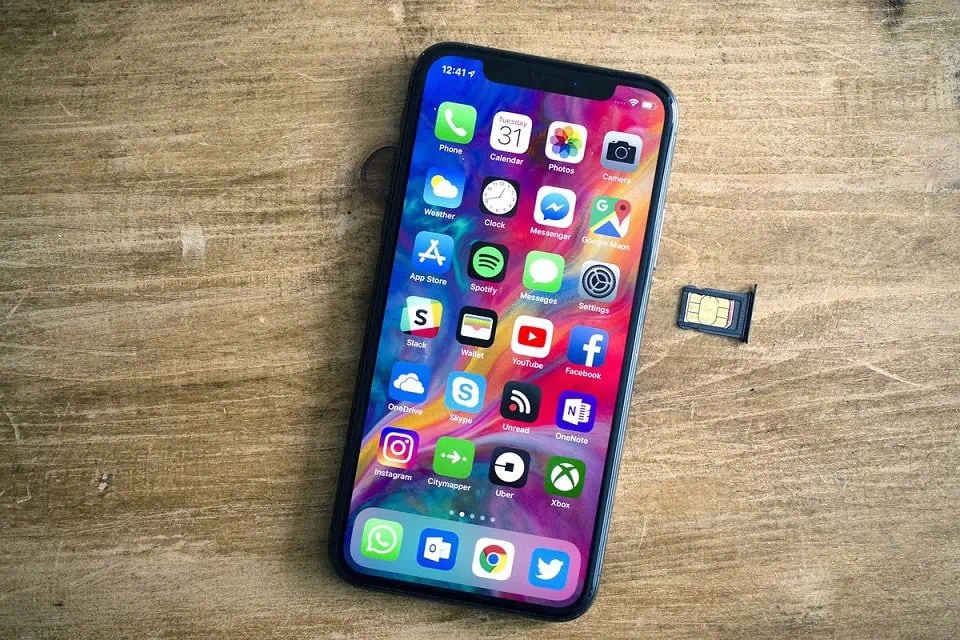It seems like apart from new generations of smartphones there haven’t really been any major developments in mobile tech in the last few years that are worth getting excited about. Apart from embedded SIM technology that is.
For mobile users, eSIM is one of the best things to happen to mobile tech.
eSIM, or embedded SIM, is a relatively new technology that is changing the way people connect around the world. Like the traditional plastic SIM cards, an eSIM connects users to mobile services. However, unlike a traditional SIM card, an eSIM is not removable.
While this may sound counterproductive, an embedded SIM is designed to be reprogrammable, which means users can connect to any participating mobile network provider at any time, from anywhere in the world.
This means many fantastic benefits for mobile users, but this article explores the 4 biggest advantages of using an eSIM instead of a regular nano-SIM.
1. More Affordable Roaming Charges
For people who travel abroad regularly, whether for business or pleasure, the number one reason for using an eSIM is the cost-saving benefits. Instead of using a traditional network provider and having to pay their exorbitant international roaming charges, an eSIM lets you connect to local networks and pay local rates, which are usually much cheaper.
eSIM users can choose a country-specific plan or opt for a globally enabled eSIM and download it directly to their phone before they travel or when they arrive. These eSIM plans usually come in two different options: Data Only or Data, Voice, and SMS.
Even better is that multiple profiles can be stored on one eSIM allowing you to mix and match plans from different providers. For example, one provider may have great rates for calls and text messages while another may have better rates for data.
2. Freedom to Switch Providers
An eSIM is programmable to any participating cellular network provider so users can easily switch between providers without having to sign any contracts or make any commitments. This means you can switch providers if you find that another one offers better rates or better coverage. For travellers, the appeal of this is undeniable.
You also aren’t limited in terms of the number of eSIM plans you can use, so you will never have to worry about being tied down to one eSIM provider. You can only use one plan at a time, but an eSIM can store multiple profiles so you can easily switch between them.
3. Two Phone Numbers on One Device
If you’ve ever been frustrated by having to carry around two phones or having to manage work and personal communications on one device, an eSIM is the saving grace you’ve been waiting for. An eSIM acts as a second cellular line (i.e. second phone number) and is embedded into the device, so you can finally let go of that second phone.
Although most eSIM plans are Data Only, a few eSIM providers offer plans with full mobile services: Data, Voice, and SMS.
Using an eSIM for your second phone number gives you true dual SIM functionality. It streamlines your conversation and offers an uncomplicated and easy way to combine your personal and business lines in one device while keeping them completely separate.
Got questions about eSIM technology? Planet eSIM is a forum dedicated exclusively to answering questions about the new technology.
4. Instant Download and Activation
Perhaps the best thing about eSIM is that it can be activated and ready to use within minutes of buying one. eSIM plans from online providers are available whenever you need them, wherever you are in the world. Whether you’re at home or about to step off the plane in another country, all you need to do is visit a website and scan a QR code and your service will be active. No contracts or store visits required.
For companies, using an eSIM makes tracking and reimbursing business expenses easier. Companies can buy eSIM plans for their employees and simply send them the QR code. This can significantly reduce expenses and help streamline business operations.
Embedded SIM is the Future of Mobile Connectivity
eSIM only really hit the mainstream in 2020 with major players like Apple introducing their first eSIM enabled phones and Samsung launching the first smartwatch that supports a standard eSIM service. Analysts predict that growth will be exponential from here and eSIM will soon be ubiquitous and potentially send plastic SIM cards into retirement.
Whatever happens, there is no denying that eSIM is here to stay and the benefits it offers are obvious. For mobile users wanting more freedom with their cellular plans and more flexibility with how they connect to cellular networks, the benefits will prove irresistible.



